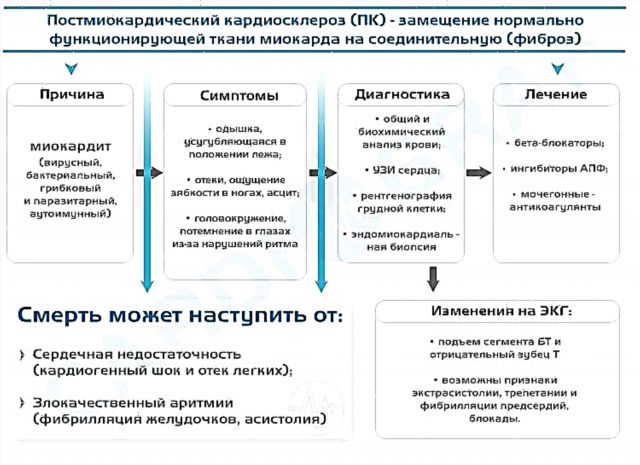Diagnosing any pathological condition, first of all, the patient's complaints are studied. Since acute respiratory diseases are the most common, complaints of a sore throat and a temperature of 37-38 degrees are the most typical reason for visiting a doctor. These conditions can be caused by exposure to both viral and bacterial pathogens.
Often these are acute processes that require immediate decision-making, and sometimes surgery. In other cases, these symptoms cause chronic processes. In their treatment, an important role is played by preventive measures.
ARVI
 Among acute respiratory viral infections, viruses are most often the cause of a pathological condition in which a sore throat and a temperature of 39 degrees are
Among acute respiratory viral infections, viruses are most often the cause of a pathological condition in which a sore throat and a temperature of 39 degrees are
- Flu;
- Parainfluenza;
- Enterovirus;
- Rhinovirus;
- Adenovirus;
Depending on the pathogen, the clinical picture changes somewhat, certain symptoms prevail, and additional signs are noted.
Additional symptoms play an important role in diagnosing a condition characterized by severe sore throat. First of all, it is necessary to pay attention to the severity of the development of clinical signs. A rapid increase in symptoms is characteristic precisely for acute viral processes. The patient notes the deterioration in a short time. In this case, in addition to pain in the throat, there is
- Sharp malaise;
- Headache;
- Aches in muscles, joints;
- Soreness when moving the eyeballs;
- Runny nose;
- Dry cough;
- Increase in body temperature to 38-39 degrees.
An objective examination of the throat cavity allows you to determine redness and swelling. Given the epidemiological history, the acute nature of the disease, the diagnosis of acute respiratory viral infections does not cause difficulties. Due to the severity of the course and the possibility of developing complications, the greatest danger is caused by influenza. Clarification of the diagnosis is facilitated not only by an inflamed throat and a temperature of 39 degrees, but also by the presence of hemorrhagic syndrome, injection of scleral vessels. In typical cases, there may be punctate hemorrhages on the mucous membrane of the pharynx, its granularity.
As for the clarification of the pathogen in other cases of ARVI, laboratory diagnostics can help. However, such a need arises in extremely rare cases, since the treatment tactics in all cases of viral infections are similar. Therapeutic measures are aimed at the speedy elimination of pathogenic microorganisms from the body and the prevention of secondary infection.
Infectious diseases
Other infectious diseases that cause severe sore throat are
- diphtheria;
- Infectious mononucleosis;
- childhood infections.
A red throat and a temperature of 39 can be one of the symptoms of infectious mononucleosis. In this case, the duration of the disease contributes to the clarification of the diagnosis.
A sore throat and a temperature of 37 can be noted for several months.
The presence of enlarged lymph nodes is characteristic not only in the area of the angle of the lower jaw or located along the anterior surface of the neck, but also in the posterior cervical, axillary, and inguinal. In some patients, the presence of skin manifestations is noted, which also allows one to suspect this pathology.
A typical symptom of infectious mononucleosis is an enlarged liver and some pain on palpation. At the same time, a biochemical blood test can detect changes in liver tests, indicating the development of an inflammatory process. Enlargement of the spleen is also characteristic. An obligatory symptom of infectious mononucleosis is a change in the blood picture, characterized by the presence of atypical mononuclear cells or lymphocytosis.
High fever, red throat, characteristic deposits on the tonsils are typical signs of diphtheria. Due to the widespread compulsory immunization, the incidence of diphtheria has dropped sharply. However, sporadic cases do occur. Moreover, the patient is contagious throughout the entire period of the illness.
The disease is characterized by a severe course, pronounced symptoms of intoxication. The patient's condition is severely impaired. An increase in body temperature can be noted up to 39-40 degrees. Sharply enlarged tonsils and the developing laryngeal edema narrow its lumen, which creates difficulty in the passage of air, causing suffocation. A patient with suspected diphtheria should be urgently hospitalized. Scraping from the throat cavity will reliably clarify the diagnosis, prescribe the appropriate treatment.
Red throat and fever can be a manifestation of childhood infections, measles, chickenpox, rubella, scarlet fever. These diseases are most widespread among the population of children. However, they are often found in adults, characterized by atypical development of symptoms and a more severe course. Clarification of the diagnosis in this case is facilitated by the presence of skin manifestations, characteristic rashes for each of the children's infections.
Inflammatory and neoplastic processes
In addition to infectious processes, a sore throat and a temperature of 37-39 are also typical for such pathological conditions:
- Pharyngitis;
- Laryngitis;
- Tonsillitis;
- Acute purulent processes in the throat cavity;
- Oncological pathology.
It is important to be able to distinguish viral pathology from diseases caused by a bacterial pathogen.
Acute tonsillitis caused by hemolytic streptococcus is a pathology that is dangerous for its complications, which requires antibiotic therapy.
Without the use of these drugs, the disease can take on a chronic course, lead to the development of paratonsillar abscess, purulent lymphadenitis, damage to the heart, kidneys, joints and other serious consequences.
The most common forms of acute tonsillitis caused by a bacterial pathogen are catarrhal and purulent tonsillitis. Factors that contribute to clarifying the diagnosis in the case of any form of sore throat caused by streptococcus are the following signs:
- Absence of symptoms characteristic of viral lesions, runny nose, dry cough, aching muscles and joints;
- For sore throat, an atypical acute onset;
- The nature of the pain is different. With angina, it is pressing, intensifies when swallowing, gives to the ear. For ARVI, perspiration, soreness in the throat is most typical;
- There are enlarged regional nodes, painful on palpation, which is not typical for the viral nature of the disease;
- An objective examination of the pharynx with angina allows you to detect inflammatory changes in the tonsils. They are edematous, hyperemic, purulent deposits can be found that fill the lacunae or follicles.
If you suspect a sore throat caused by streptococcus, a throat swab should be examined.
Bacteriological examination and sowing of the contents allow to reliably clarify the nature of the lesion, to select the most effective antibiotics for treatment.
A general blood test also allows you to identify changes that are most characteristic of a bacterial pathogen: increased ESR, leukocytosis.
Acute pharyngitis and laryngitis can be of both viral and bacterial nature. In addition, their occurrence is facilitated by the irritating effect of dangerous impurities in the air, hypothermia, and spicy food. In this case, symptomatic treatment plays a decisive role, therefore, there is no need to clarify the pathogenic pathogen.An important diagnostic factor is the presence of additional symptoms, dry hacking cough and hoarseness, and sometimes its absence.
With the hypertrophic form of laryngitis, the presence of growths on the vocal cords is noted, which is a characteristic symptom that contributes to the diagnosis of the disease.
In addition, the presence of these nodules explains the change in the timbre of the voice in a patient with laryngitis. With pharyngitis, the objective picture is characterized by the scarcity of existing manifestations, while the cough is constant, exhausting.
 The phenomena of intoxication during such processes are not very pronounced. A temperature of 38 degrees is atypical, its subfebrile indicators are most characteristic. An objective examination of the pharynx, carried out by an otolaryngologist, allows you to clarify the localization of the lesion and prescribe the appropriate treatment.
The phenomena of intoxication during such processes are not very pronounced. A temperature of 38 degrees is atypical, its subfebrile indicators are most characteristic. An objective examination of the pharynx, carried out by an otolaryngologist, allows you to clarify the localization of the lesion and prescribe the appropriate treatment.
Tumor processes localized in the throat are characterized by a slow increase in symptoms. At first, painful sensations can be described by patients as a sore throat, the presence of a foreign body. The larynx is most commonly affected, so hoarseness or nasalness is the first symptom of concern. In this case, malaise, prolonged subfebrile condition may be noted. Over time, the nature of the pain becomes constant, there is a deterioration in appetite, weight loss.
Acute purulent processes
Surgical pathology, acute lymphadenitis, paratonsillar abscess are usually a complication of purulent tonsillitis. Most often, patients who have not received timely antibiotic therapy can get sick. In this case, after some improvement, an increase in clinical symptoms is noted. The sore throat increases, the body temperature rises to 39-40 degrees, and intoxication is increasing. If the use of antibiotics does not improve the situation, surgery is performed to help evacuate the pus.
With similar complaints of sore throat and high fever, purulent inflammation of the middle ear may occur. Despite the fact that the process is localized in the tympanic cavity, the pain from the ear radiates to the neck or throat. In this regard, patients often complain precisely of the aching sore throat. Having performed otoscopy and pharyngoscopy, the ENT doctor can easily clarify the localization of the process.
In all cases when there is pain in the throat without signs of an acute respiratory viral infection, it is necessary to consult an otolaryngologist. The specialist will establish the cause of the pathological changes, prescribe the appropriate treatment. The presence of additional symptoms, such as a rash or lymphadenopathy, is also a reason to seek help from a specialist.



